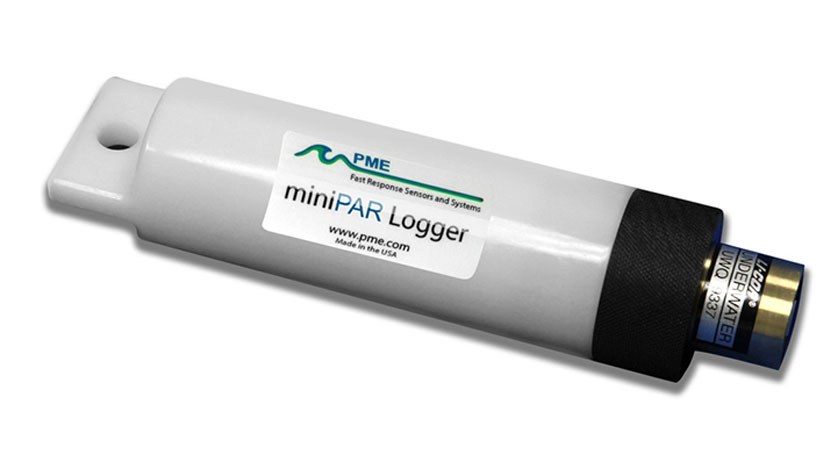Precision Measurement Engineering Launches New miniPAR Logger

Precision Measurement Engineering, a premiere designer and manufacturer of freshwater and oceanographic monitoring systems and instruments, has announced the launch of its miniPAR Logger that logs photosynthetically active radiation (PAR), water temperature and tilt measurements. The completely submersible logger measures the amount of diffused sunlight through water, which can be beneficial for understanding nutrient loading, photosynthesis, and algal blooms in natural waters up to 100 meters deep.
The miniPAR sensor is a Li-Cor Underwater Quantum Sensor, which measures PAR from all angles in one hemisphere. The logger is unique in that it also records tilt, which will help the user understand the orientation of the logger and alerts the user as to whether or not the sensor was rotated in any particular direction. PAR measurement accuracy is dependent upon the stability of the sensor pointed towards the water surface.
“We are excited to offer the miniPAR logger as it will allow researchers to log the intensity of light penetration over time, which could provide greater insight into algal blooms and other biological processes in lakes, rivers, and coastal applications,” said PME CEO Kristin Elliott.”
PME also offers a miniWIPER for the PAR logger so that long-term deployments are made possible. Algae growth on the sensor can drastically change the accuracy of the PAR measurements, but with continuous wiping, the user can be confident in PAR monitoring over extended periods of time. PME also supplies various software for viewing and retrieving the miniPAR Logger data.
PME has also been working with several academic institutions to bring the miniPAR to fruition to meet demand for this segment of the market.
“I was interested in a PME miniPAR logger because of the high quality PME instrumentation we already have and our desire to be able to measure light levels underwater at high frequency,” said Kevin Rose, Assistant Professor, Department of Biological Sciences, Rensselaer Polytechnic Institute. “By pairing two miniPAR sensors located at different depths, we can now estimate a diffuse attenuation coefficient at short-time scales in order to understand how water clarity changes in response to events such as severe summer storms. We already own a number of PME miniDOTs and have been impressed with their construction, longevity, and the quality of data they produce. Therefore, we wanted to go with PME for a PAR sensor. We also ordered wipers for the miniPAR sensors, so we can keep the sensor faces clean and can leave the sensors out for extended, autonomous deployments.”

